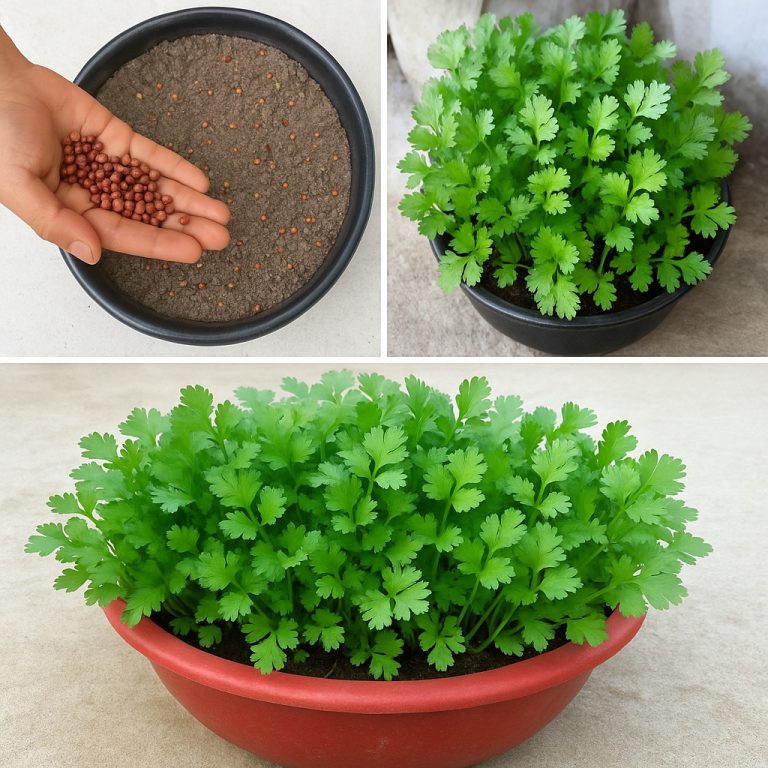ADVERTISEMENT
Creative Way To Grow Coriander Without Watering – Simple But Effective
Coriander, also known as cilantro, is a beloved herb in many kitchens worldwide. Its fresh, citrusy aroma and distinct flavor make it an essential ingredient in numerous dishes. However, coriander can be tricky to grow, especially in hot climates where it tends to bolt quickly. One of the biggest challenges gardeners face is keeping coriander hydrated without frequent watering.
What if there was a way to grow coriander without the hassle of daily watering? The good news is that you can cultivate lush coriander plants using creative techniques that retain moisture naturally. This method is not only practical but also environmentally friendly, saving water while ensuring a continuous supply of fresh coriander. Let’s explore how you can grow coriander with minimal effort and water usage.
1. Choose the Right Coriander Variety
Some coriander varieties are more resistant to drought and slow to bolt, making them ideal for low-water gardening. Consider the following varieties:
Slow Bolt Coriander – Designed to resist premature flowering and thrives in warm conditions.
Cruiser Coriander – A robust variety that withstands heat stress and retains moisture longer.
Calypso Coriander – Highly productive and slow to bolt, ideal for growing with minimal watering.
Choosing a variety that suits your climate ensures better growth with less effort.
2. Prepare a Water-Retaining Soil Mix
The secret to growing coriander with minimal watering lies in the soil. The right soil mix retains moisture while allowing adequate drainage to prevent root rot.
Best Soil Composition:
50% garden soil – Provides structure and essential nutrients.
30% compost or aged manure – Improves moisture retention and boosts fertility.
10% coconut coir or peat moss – Absorbs water and releases it slowly to the roots.
10% perlite or sand – Enhances drainage and prevents compaction.
Before planting, mix the soil thoroughly and moisten it evenly. This preparation ensures that coriander roots receive consistent moisture without frequent watering.
3. Use a Self-Watering System
A self-watering system allows coriander to absorb water as needed, eliminating the need for daily irrigation. Here are a few simple methods:
a) Wick Irrigation System
Use a container with a built-in reservoir at the bottom.
Insert cotton or nylon wicks from the soil into the water reservoir.
The wicks draw water upward, keeping the soil moist at all times.
b) Plastic Bottle Drip System
Take an old plastic bottle and poke small holes in the cap.
Bury the bottle near the plant’s roots, leaving the top exposed.
Fill the bottle with water, and it will slowly release moisture over time.
c) Clay Pot Irrigation
Bury an unglazed clay pot (olla) near coriander plants.
Fill it with water, and it will gradually seep moisture into the soil.
These low-maintenance watering systems ensure that coriander remains hydrated without daily attention.
4. Apply a Thick Layer of Mulch
Continued on next page
ADVERTISEMENT
